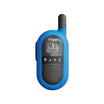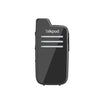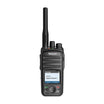Two-way radio communication systems are essential for seamless operations in various business environments. Here are some best practices and advice to enhance communication efficiency with two-way radios.
Key Procedures for Effective Two-Way Radio Use
Ensure Readiness: Start by ensuring your radio's battery is fully charged. Power on the radio, usually via the volume control, and verify it's set to the correct channel to facilitate clear communication with your team.
Clear Communication: Before transmitting, ensure the channel is free from other conversations to avoid interference. To initiate a call, press and hold the Push-To-Talk (PTT) button, speak clearly into the microphone, positioned about 10 to 15 centimeters from your mouth, and release the PTT button to switch back to receive mode.
Concise Messaging: Since two-way radios support one speaker at a time, keep messages brief and to the point. This approach allows others to acknowledge your message or ask for clarification promptly, enhancing the overall efficiency of your communication network.
Mind the Pause: After pressing the PTT button, wait a moment before speaking. This slight pause ensures your radio has begun transmitting, preventing the first words of your message from being clipped.
Adopt Common Phrases: Using common language and etiquette, such as "Over" to indicate the end of a transmission or "Out" when concluding a conversation, streamlines communication. Familiarizing yourself with these phrases improves both your confidence and the effectiveness of your radio communications.
Following these guidelines will not only boost your communication skills but also maximize the benefits of your two-way radio system, making it a more effective tool for your business or organization.
In adapting to various communication needs, whether using PMR446 walkie-talkies, analogue or digital two-way radios, LTE/PoC radios, or Satellite PTT radios, understanding and implementing these best practices can significantly enhance operational efficiency and safety.










































